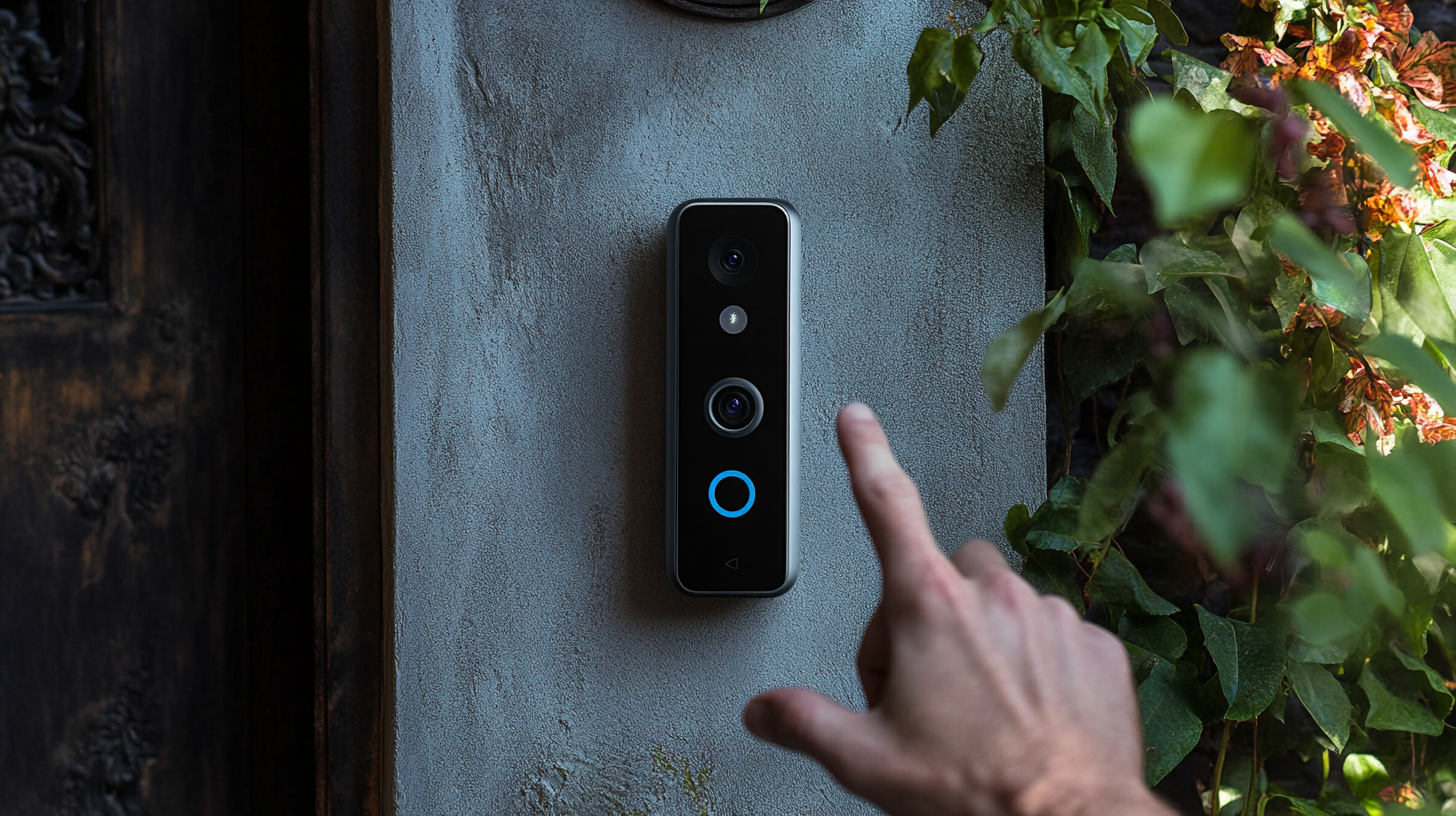In today's rapidly evolving global business landscape, the importance of security and communication cannot be overstated. The market for Video Doorbells is booming, with a projected compound annual growth rate (CAGR) of 20% over the next five years, driven by increasing concerns over property security and the rise of smart home technology. According to a recent industry report, nearly 40% of homeowners have installed smart video surveillance systems, highlighting the growing demand for video-based solutions. As businesses worldwide seek to enhance their premises' security while improving customer interaction, selecting the best video doorbell becomes paramount.

In this ultimate guide, we will explore the key factors to consider when choosing a quality manufacturer and delve into effective solutions that cater to various business types, ensuring your investment aligns with your specific operational needs and security requirements.
In today’s interconnected world, video doorbells have emerged as a vital tool for enhancing business security on a global scale. With the rapid growth of the home security market, valued at approximately $56.2 billion in 2023 and projected to expand steadily, businesses must prioritize the integration of advanced security solutions like video doorbells to protect their assets and personnel. These devices not only deter theft and unauthorized access but also provide real-time monitoring, allowing for swift response to potential threats.
The evolution of smart security technology has transformed video doorbells into sophisticated components of a modern security ecosystem. As the doorbell camera market experiences significant growth, with an anticipated CAGR of 14.8% from 2024 to 2030, businesses across the globe are recognizing the importance of these tools. They enhance security by enabling remote communication and surveillance, ensuring that companies can maintain a vigilant presence, even when staff are not physically on-site. Such enhancements are essential for managing compliance and security complexities in an increasingly digital landscape.

When selecting a video doorbell for your global business needs, it's essential to focus on key industry standards for manufacturing and performance. According to recent market research, the global video doorbell market is projected to reach $4.5 billion by 2025, driven by increasing consumer demand for enhanced security and smart home integration. Factors like video resolution, night vision capability, and motion detection are critical in determining the effectiveness of these devices.
**Tip:** Look for video doorbells offering at least 1080p HD video quality and advanced motion detection features. These specifications not only improve the clarity of recorded footage but also enhance the ability to capture activity outside your premises.
Another vital standard involves connectivity options. The best video doorbells provide seamless integration with Wi-Fi networks and compatibility with smart home platforms. A report from the Consumer Technology Association suggests that devices with robust wireless standards show a 30% improvement in user satisfaction due to reduced connectivity issues and more reliable performance.
**Tip:** Ensure that the video doorbell you select supports both 2.4 GHz and 5 GHz Wi-Fi bands for optimal performance, especially in environments where network congestion may occur.

In recent years, the demand for smart video doorbells has surged significantly, particularly for commercial applications. As businesses look to enhance security and streamline operations, investing in smart video doorbells becomes an essential decision. With the smart doorbell market projected to grow at a compound annual growth rate (CAGR) of over 33.1% from 2025 to 2032, reaching a staggering USD 61.07 billion by 2032, it’s clear that companies are recognizing the benefits these devices bring to their premises.
When considering the best video doorbell for commercial use, businesses need to evaluate several key features. High-definition video quality, motion detection capabilities, and integration with existing security systems are crucial factors. Additionally, companies should look for devices that offer cloud storage options and robust mobile app support for remote monitoring. As competition in the smart security market intensifies, choosing a video doorbell that aligns with specific business needs can significantly enhance safety and operational efficiency in the long run.
The integration of artificial intelligence (AI) with the Internet of Things (IoT) is fundamentally transforming video doorbell solutions. As more AI cameras are connected within the IoT ecosystem, businesses are witnessing significant enhancements in security and operational efficiency. According to industry analyses, the global video surveillance market is expected to grow from $54.42 billion in 2024 to $88.71 billion by 2028. This growth is driven by advancements in AI technology, which enable real-time facial recognition and behavioral analysis, bolstering security protocols for organizations globally.
Moreover, the convergence of AI and IoT is paving the way for innovative applications in video doorbell systems, providing features such as smart alerts and integrated monitoring options. This trend aligns with the predicted emergence of 6G technology, which promises to further elevate connectivity standards and improve service delivery in various sectors, including remote monitoring of facilities. As businesses prepare to adopt more sophisticated security solutions, the emphasis on integrating AI capabilities into IoT frameworks is becoming a crucial consideration.
When selecting a video doorbell for global operations, it’s imperative to consider factors that ensure seamless integration with your existing security systems. According to a recent report by MarketsandMarkets, the global video doorbell market is projected to grow from $3 billion in 2022 to over $6 billion by 2026, highlighting a rising demand for reliable and intuitive security solutions. An essential consideration is compatibility with various smart home devices and platforms, as interoperability can significantly enhance operational efficiency across international locations.
Another critical factor is the video quality and data transmission capabilities. A survey conducted by IHS Markit revealed that 80% of users prioritize high-definition video quality to ensure clear identification of visitors, whereas robust internet connectivity remains crucial for real-time surveillance and alerts. Additionally, consider the availability of multi-language support and customer service, which can greatly impact user experience across different regions. By focusing on these aspects, global businesses can effectively deploy video doorbells that not only secure their premises but also enhance their operational capabilities.
